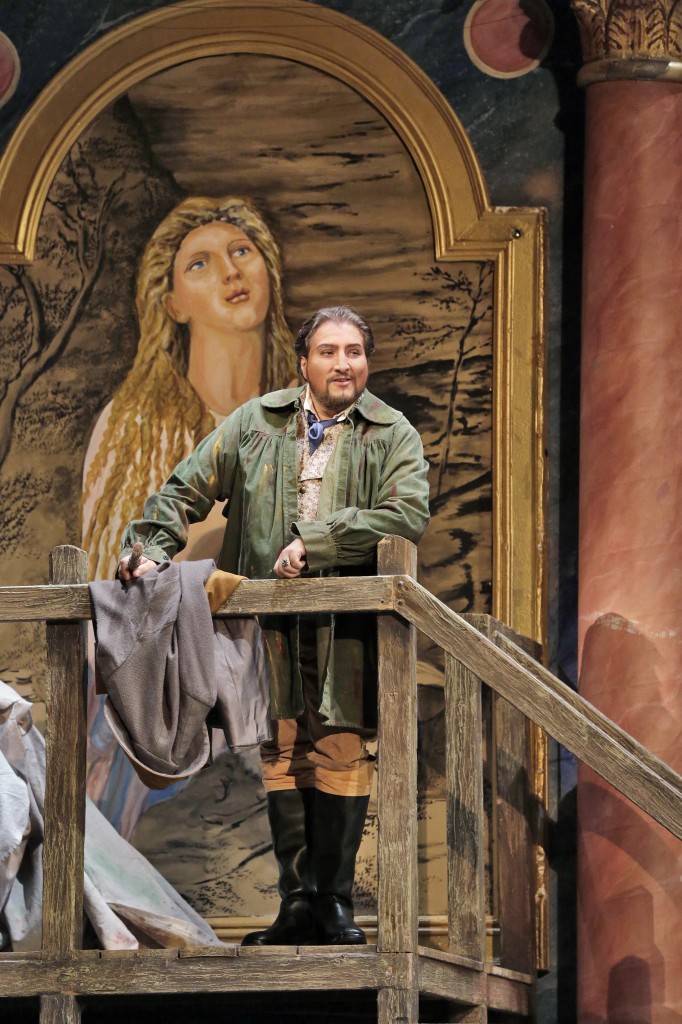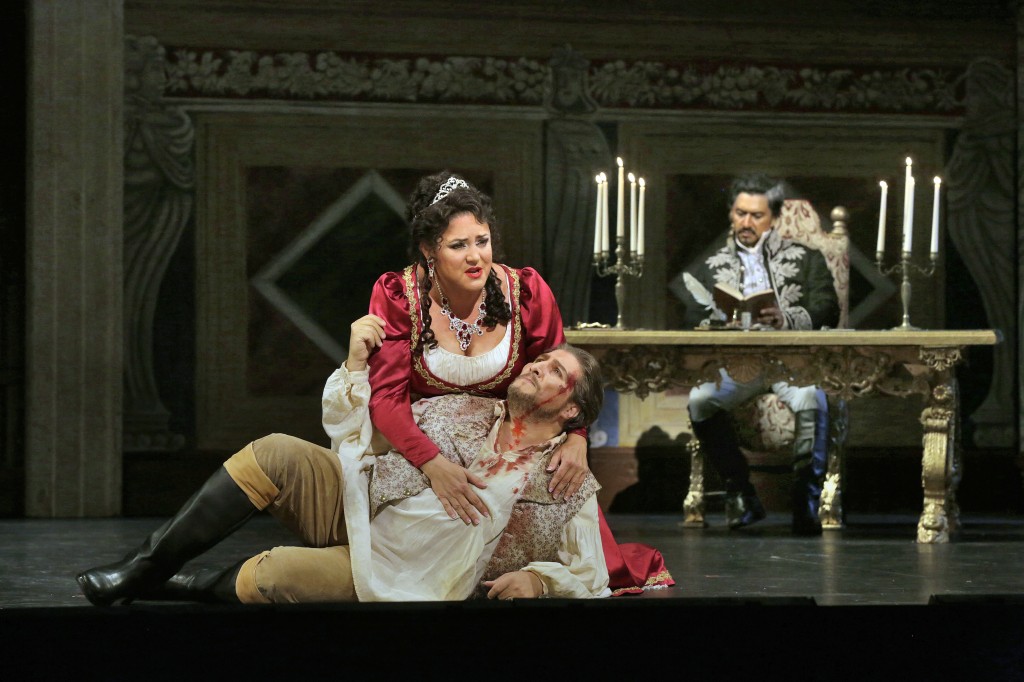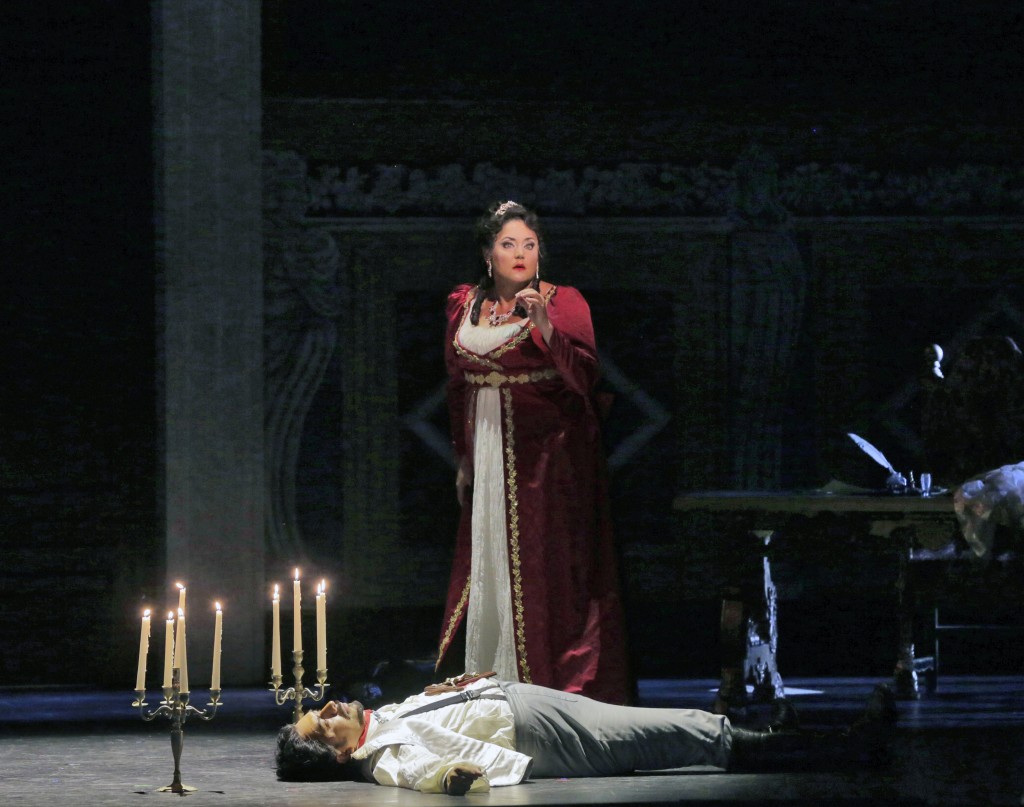Change was in the air last Saturday when the Atlanta Opera unveiled its 2013-14 season opener, Puccini’s Tosca, to an enthusiastic reception. The performance also marked a relatively sudden changing of the guard: The ascend of Tomer Zvulun as the new Artistic Director, officially signaling the end of Zurich General Director Dennis Hanthorn’s tenure. For those Atlantans keeping count, this is the second major change in administration since the company’s first major champion, William Fred Scott, left the position back in 2005. With the promise of new leadership comes the burgeoning hope that the company will move past the wallowing state of transition it has found itself in the past 5 or so years. I cringe when I recall an event held at another regional company, where a rather sassy gentleman reacted to the mentioning of my home city with “Oh, I hear they do a lot of Don Giovannis there”. Burn. Change may do some good for the Atlanta Opera, and while fans of the former administration abounded in the auditorium (newoutpost not being one of them, for the record), Mr. Zvulun’s reception on opening night was universally warm and welcoming. It should be noted that, though Mr. Zvulun directed this production of Tosca, we must really look towards the 2014-15 season for a true assessment of his leadership, since the current season was planned well before he took unto this his new role.
Caveats notwithstanding, it would appear that Mr. Zvulun became entangled with this new business of picking up the pieces where Mr. Hanthorn left off, which may have left him little time to wear the director’s cap. Helped by truly stunning sets imported from Fort Worth Opera, the opening night ran its course through its linear tracks well enough, but a pervasive lack of spontaneity and dramatic cohesion was evident throughout. Moments where the director had a clear hand in introducing a personal variation (such as the placing of principal characters center stage with the setting gradually opening up around them), struck as disjunct interpolations when pitted against the overall presentation. Worse, the cement which bonds the director’s concept with the artists’ interpretation appeared to have had little time to harden, laying bare the instances when the singers’ inspiration departed drastically from the director’s instructions. The whole affair strongly implied that Mr. Zvulun may have left much of the dramatic business up to the singers, a practice your friends at newoutpost frankly prefer over a more modern streamlined direction. We are more interested in the personality of these singers and what they bring to these roles. What the audience was unintentionally treated to resembled the performance style of antiquated presentations in provincial Italy, and we were not among the ones who scoffed at the idea.
Mr. Zvulun’s Tosca may have disappointed the modernists who may have wanted a derivative of the Metropolitan Opera’s recent (and generally dismissed) new production of Tosca which opened the great company’s 2009-10 season. In his essay on Puccini’s opera, found inside the evening’s pamphlet, Mr. Zvulun even brings up that whole Hitchcock business which propelled Luc Bondy’s conceptualization of the work in New York (don’t pull it Mr. Zvulun, the broadcasts are free and we all hear them). Perhaps the director saw the budget, met his singers, and wisely gave up on the idea.
Market research has it that in order to appeal to a younger generation of opera lovers, you must cast thin, beautiful people who look great in costumes and can believably emote their roles. These singers must also be expert musicians, capable of passably phonate nine languages and navigate through a wide range of musical genres. It also does not hurt if the singer looks good naked and is willing to go the extra mile to validate the concept of some genius repetiteur. While all of this is a fine recipe for success, it does little to explain the triumph of Massimiliano Pisapia’s Mario Cavaradossi on opening night. On paper, he has a lot going against him. While agreeable to behold, he is hardly built for the glossy ads, it is doubtful he has ever touched a page of Schoenberg, and his acting indicates that he is Italian but goes no further. Moreover, his singing is gravely affected by many technical idiosyncrasies hampering his expression and pitch. Yet, his appeal was his very vice. His triumph was unquestionable, mainly because he possessed a quality that in the role of Mario Cavaradossi completely trumped any others. He is the possessor of an unmistakably Italian tenor voice, the type we have enjoyed on records of the past and which opera lovers mourn as a virtually extinct commodity. Suddenly, we were presented with this Japanese sea lion, alive and kicking, one more than willing to display the reasons why we have missed it so much. I should clarify that Mr. Pisapia’s is hardly a first rate Italian sound, rather one who used to be commonplace in Italian regional opera companies in the mid 20th century. Yet this throwback element alone, and its marriage to this music, sold the evening.

Mario Cavaradossi (Massimiliano Pisapia) muses over the beauty of his beloved Tosca. Photo by Ken Howard
Going back to the business of critiquing, chipping away at his technical means was a simple task. The man’s singing is so incredibly open, one imagines him growing up listening to Giuseppe di Stefano recordings and wishing to emulate. This practice got him into real trouble during his opening number, the difficult “Recondita armonia,” which grew strangely unidiomatic as he flirted between this open declamatory style and straight tone. Other seemingly surefire moments in his duets with Tosca, “Quale occhio al mondo” and “O dolci mani” for instance, flirted with flatness of intonation where they should have been meltingly sung by this swaggering voice. This technique does not generally lead to longevity, so we hope Mr. Pisapia’s throat is built to withstand it or that he manages to find more varied means along the way. In the meantime, there was a lot of beautiful Italian phrasing and open vowels to go around (his diction, as expected, was exemplary), and his “E lucevan le stelle” was beautifully sung. More importantly, he gave the audience what it instinctively wants: Not looks, acting, or designer costumes. The man gave voice! An essentially lyric tenor voice, wielded with indiscriminate abandon (such as the victory cries in act two, surely out of respect to the great Corelli) simply because that is just the way it ought to be done. A quick note to conductor Arthur Fagen would be appropriate at this juncture, who after a rather funeral start to act one picked up the pace for the remainder of the evening, and would allow a singer to luxuriate past the point of decency. Take that, Maestro Muti! This is not only Mr. Pisapia’s debut with the Atlanta Opera, but also his first stab at the part of Mario. We predict that it is likely to become his signature role, and we thank our friends at the Atlanta Opera for allowing us to have been there to hear it first.
At the heart of this performance was the Tosca of soprano Kara Shay Thomson, who makes her Atlanta Opera debut in this role. As heard on opening night, she served as a sort of antithesis to Mr. Pisapia while proving equally successful in her task. Her soprano is of the lyrico spinto brand, armed with a gritty middle register and a bright, luminous top. Her chest emissions, in contrast, were of more innocent quality and convinced much less. While not giant in size, the voice cut extremely well over the orchestra and managed to travel throughout the auditorium with apparent ease. Unlike her tenor, she understood the geometry of this role very well (having already performed well over fifty performances of it), and knew exactly how to cope with its difficulties by way of a more comprehensive vocal technique. Her Tosca was well sung, often heartfelt, and at times endearingly campy. Her instrument required some time to rev up, so a question mark loomed over the majority of her first act until she came to the sustained lines of “Ed io venivo a lui tutta dogliosa”. In act two as well, the spikier vocalism was wanting (a sketchy slide up towards the note,) until she revealed a beautiful read of the opera’s keynote aria “Vissi d’arte”. By then, a pattern had been established: Her best singing was heard during moments when her voice was allowed to spin out over a long arc of music. Dramatically, she portrayed a young, coquettish Tosca, more kittenish than the tempestuous diva. Her knife-wielding stunt in the second act struck as thoroughly disconnected with the rest of her interpretation, and her preparation and subsequent carrying out of the event bordered on the comedic (three karate style swings with the knife). For those with a fetish for this sort of thing, she sang (not declaimed) the last words of act two. Her final meltdown at the realization of Cavaradossi’s true fate was totally committed and it touched the heart, so much so that we forgave the rather stilted and awkward leap off the parapet that closed the curtain (Mr. Zvulun?!). She was a real asset to this production and we hope to see her return.

“Where is Angelotti?” Tosca (Kara Shay Thomson) helps the wounded Mario (Massimiliano Pisapia) while the evil Baron Scarpia (Luis Ledesma) savors his work. Photo by Ken Howard
Less fortunate in his assignment was baritone Luis Ledesma, who tried his very best to portray the opera’s evil Baron Scarpia but met with little success. As seen at the prima, no one would question Mr. Ledesma’s commitment to embody the tremendous operatic figure that is Scarpia. He is a good singer, and did a lot of important work throughout the evening in terms of his use of the parola scenica and stage deportment. He frowned a lot. But at the end of the day, it is the voice that must do the work, and here Mr. Ledesma was found sorely lacking. His vocal profile proved simply too meek to project Scapia’s titanic personality, at times even failed to make it past the orchestral fabric. The long list of comprimario parts was best represented through the excellent singing of bass baritone Tyler Simpson as the sacristan. He, alongside Ms. Thomson, displayed the most complete technical mastery in the entire cast. In contrast, the Angelotti of Jason Eck was merely perfunctory both vocally and dramatically. Somewhat more successful were Scarpia’s henchmen, Adam Kirkpatrick as Spoletta and Andrew Cummings as Sciarrone, who relished in their stage business with gusto. The part of the unseen boy shephard was sung as a last minute replacement by soprano Megan Mashburn, whose sweet soprano made one wonder why she didn’t get the original assignment in the first place.
If you have not had a chance to catch this production, fret not: there are still two more performances of Tosca at the Atlanta Opera (October 11 and 13). For details, be sure to check out their website at www.atlantaopera.org
-Daniel Vasquez
